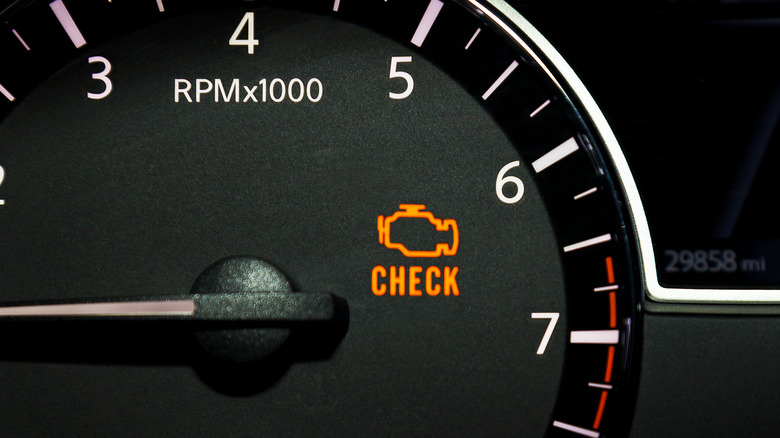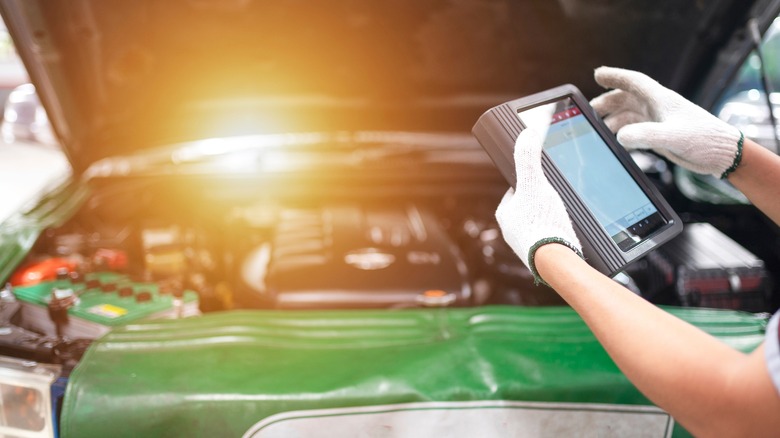P0128 Engine Code: What This Diagnostic Trouble Reading Means & How To Fix It
Car owners dread few things quite as much as a vehicle's "Check Engine" light. However, the dreaded signal doesn't always foretell a worst-case scenario for motorists. They can even help prevent catastrophic engine trouble by alerting you to a small problem before it becomes a major one.
Such preventative measures are contingent on auto owners taking action and ensuring their car gets a full diagnostic check when the Check Engine light comes on via a mechanic, or their own diagnostic code reader. While it can be nerve-wracking waiting to find out what a diagnostic check will turn up, one error code that may encourage a moderate sigh of relief from car owners is P0128 — it merely signals there may be an issue with the vehicle's thermostat or its ability to regulate coolant temperature.
The P0128 error could be indicative of several other problems, however, and there are some red flags to watch out for before the check engine light flicks on; such as the vehicle's temperature gauge displaying that the engine is not as warm as it should be, your vehicle taking longer than usual to warm up, or the engine temperature steadily rising while driving on the freeway. If you don't catch the issue before the check engine light comes on, or diagnose it yourself with a handy car diagnostic tool, here are a few things you need to know about what causes a P0128 error code — and what to do if you see one.
What causes the P0128 code on your car?
There are a couple of other red flags to look for if you're hoping to catch issues related to a P0128 error code before the dreaded Check Engine light blinks on, such as noticeably diminished fuel economy on your car, or a malfunctioning heating system. Once that light goes on, however, it means your car's Engine Control Module or Powertrain Control Module has sent a signal to the On-Board Diagnostic System that some issue is causing the engine to run cooler than it should, and action needs to be taken.
Coolant temp can become an issue because when the car's engine doesn't reach its target temperature, it has trouble maintaining fuel economy and controlling emissions. As for what may be causing the code P0128 problem, several components need to be inspected as the function in part monitors the rate at which engine coolant reaches an ideal operating temperature.
If the engine isn't reaching or maintaining its target temperature, there may be a problem with the cooling fan, the intake air sensor, the coolant temperature sensor, or the thermostat. But you might also receive a P0128 signal if you're regularly operating the vehicle in areas that experience lengthy stretches of extreme cold, as that may prevent your car from warming up.
How to fix a P0128 code on your car
While a P0128 error code may not signal immediate disaster for your car, it should be taken very seriously, as the issue concerns how your engine regulates temperature. Given the engine components involved, it will likely be necessary to consult a mechanic to address any potential issues, as assessing the problems early may help prevent future problems.
However, if you think extreme cold is behind your car's P0128 error code, you might be able to reset its internal sensors by taking the vehicle on a series of short drives, since this may help the engine reach an ideal operating temperature.
If cold weather is not the culprit, an automotive professional will likely need to perform some tests to diagnose the problem. Those tests may include checking your vehicle's radiator hoses, thermostat, and coolant, as well as any sensors put into place to monitor the temperature and function of each. If you've got bad sensors, they may need to be replaced. The same is likely true for the thermostat if it proves faulty.
It should go without saying that any such issues should be addressed as soon as possible if you want to keep your engine functioning at maximum efficiency for the long run.


